John Woestman of BHMA and I worked on this article together, addressing some important changes related to electrified hardware that will be included in the 2024 IBC. Some of these changes may be helpful even before adoption of the new code…it’s never too early to be aware of what’s coming!
This post was published in Door Security + Safety

The International Code Council’s code development cycle for the 2024 editions of the model codes began at the beginning of 2021, and there are already many proposals related to electrified hardware that have been approved and will be included in the next edition of the International Building Code (IBC). As with past code development cycles, the Builders Hardware Manufacturer’s Association (BHMA) Codes, Government, & Industry Affairs (CGIA) Committee played an important role in modifying the 2024 codes.
The code development process is a lengthy one, but BHMA’s investment in this process helps to ensure that the model codes are technically appropriate and up-to-date with regard to door openings, have clear and concise requirements, and use language that is consistently interpreted, applied and enforced. When questions are frequently raised about a particular code section pertaining to door operations or door hardware, we try to address them through this process. The code sections related to electrified hardware are a common source of questions.
After working together to develop and submit BHMA’s proposed changes, the CGIA committee then reviewed proposals submitted by other organizations to identify which of these would affect the door and hardware industry. This ensured that we were prepared for the Committee Action Hearings, where testimony was presented in support of, and in opposition to, the proposals. The ICC code development process continued through the public comment hearings – the 2nd round of public debate.
Proposals for the 2024 IBC have been approved for the following electrified hardware applications, and these changes should have a huge impact on interpretation and implementation. Some of the approved changes are clarifications of the intent of the code, and others are changes to the requirements. The approved clarifications may be able to be implemented immediately, and the approved changes could be used as the basis for a request made to the AHJ for a code modification prior to adoption of the 2024 IBC.
~~~
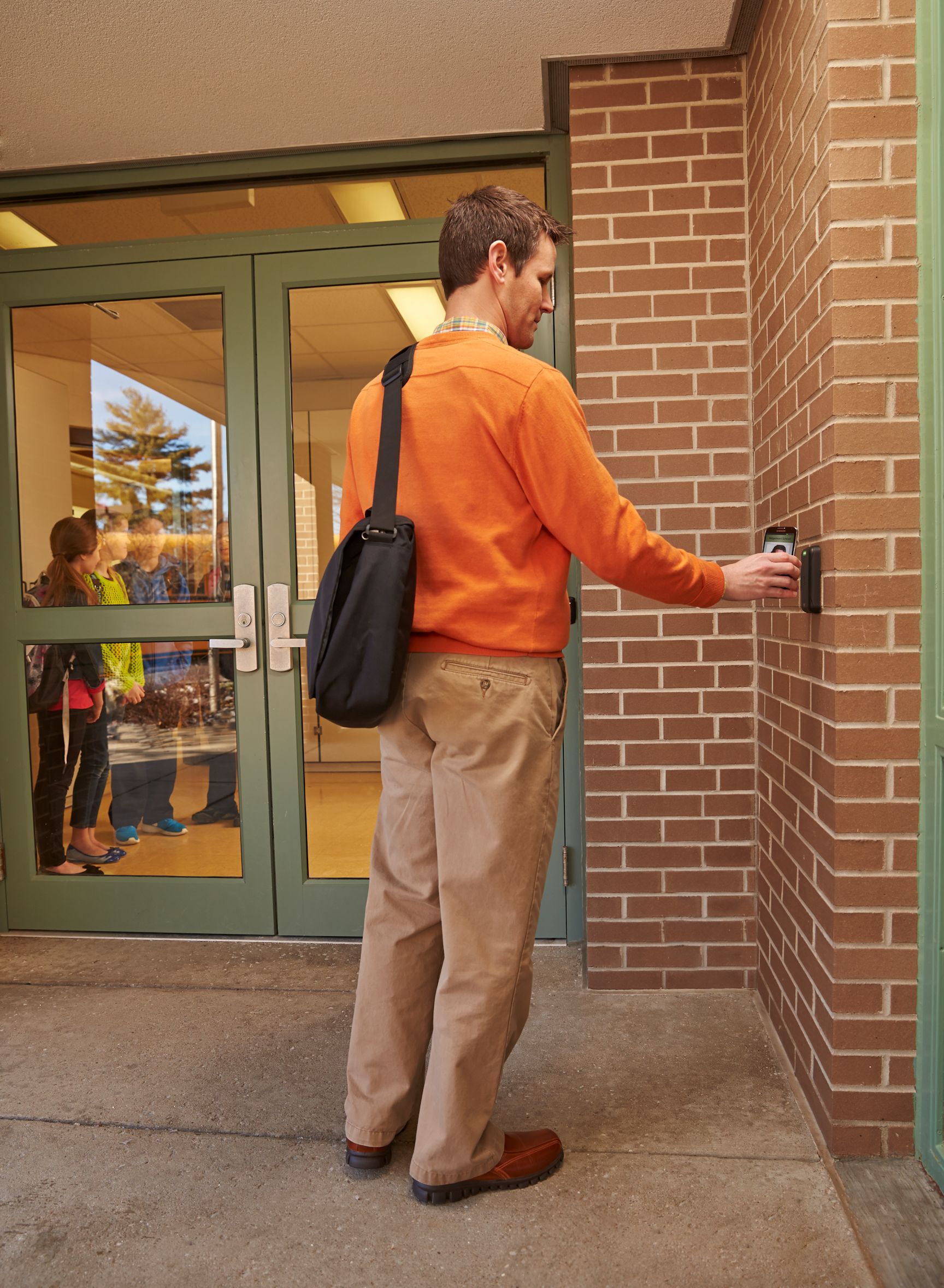
The most common type of access control door has electrified hardware that controls access but does not affect egress. A change to the 2024 IBC will address these doors.
Access Control / Free Egress
ICC Proposal E49-21 – Approved as Modified by Public Comment 1
One of the most common model code misinterpretations associated with electrified hardware is the failure to differentiate between “special locking arrangements” and “normal locking arrangements.” Special locking arrangements may affect egress, and there are specific requirements in the model codes for each application. These specific requirements help to balance life safety with security. However, the most common type of access control door does not limit or affect egress. For these doors, the access control reader controls ingress, and the door hardware allows free egress regardless of the status of the access control system. These systems are not considered special locking arrangements and could instead be called normal locking arrangements.
The cause of confusion is that currently there is no section in the model codes that specifically addresses these access control doors that allow free egress. That will change in the 2024 IBC, as a proposal has been approved that clarifies the intent of the code. Doors with access control systems and doors with systems that monitor or record egress may have hardware that complies with one of the sections addressing special locking arrangements, OR “shall be readily openable from the egress side without the use of a key or special knowledge or effort.”
When a door with an access control reader on the ingress side of the door is equipped with hardware that facilitates free egress, this section makes it clear that the door and hardware do not have to comply with the special locking arrangements sections. These normal locking arrangements are required to comply with the typical egress requirements for mechanical hardware.
~~~
Electrified Hardware Listings – UL 294 or UL 1034
ICC Proposal E52-21 – Approved as Submitted
Due in part to the access control misinterpretations covered above, some Authorities Having Jurisdiction (AHJs) have required ALL hardware used on ALL access control doors to be listed to UL 294 – Standard for Access Control System Units. While the UL 294 listing is required by the model codes for some types of special locking arrangements, the listing is not required for doors that have an access control reader to limit ingress in conjunction with hardware that allows free egress.
The other question that was not clearly addressed in the model codes was regarding which components of an electrical locking system were required to be listed to the UL 294 standard. Does the requirement apply to the locks only, or do power supplies, readers, push buttons, electric power transfers and other electrified products also require the UL 294 listing?
The 2024 edition of the IBC has clarified that in each of the 4 special locking arrangements sections that require the listing: “The electro-mechanical or electromagnetic locking device shall be listed in accordance with either UL 294 or UL 1034.” This limits the required listing to the lock itself and allows the product to be listed to EITHER UL 294 OR UL 1034.
~~~
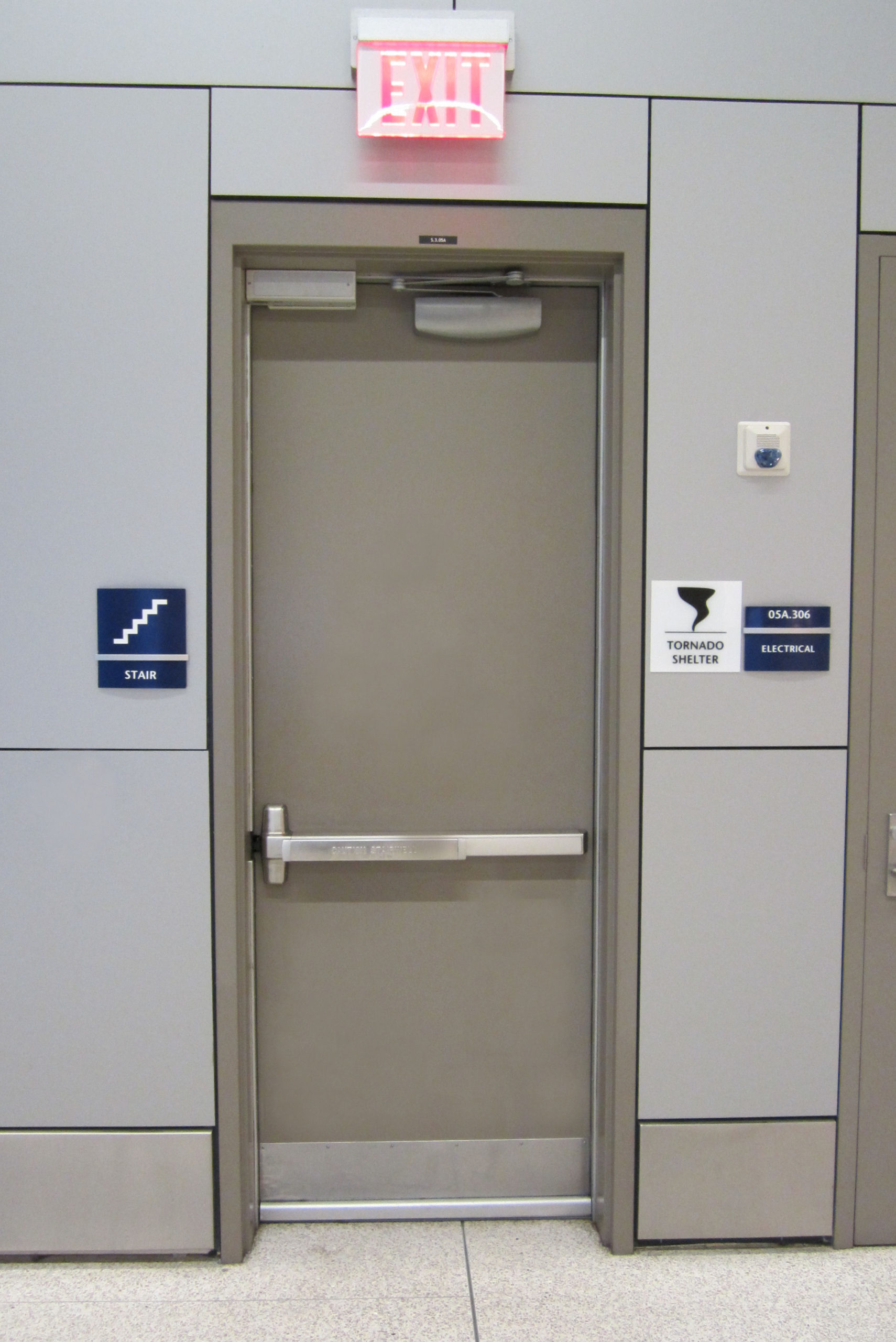
Beginning with the 2024 IBC, doors required to have panic hardware will not be allowed to have electromagnetic locks released by a sensor; the mag-lock must be released by a switch in the panic hardware.
Electrified Locks Released by a Sensor, on Doors with Panic Hardware
ICC Proposal E48-21 – Approved as Submitted
Electromagnetic locks are considered one of the special locking arrangements, and a change proposed by an AHJ has been approved for the 2024 IBC; the approved change will affect where mag-locks may be used. The model codes cover two methods for releasing mag-locks:
- Sensor Release: The mag-lock is released by a sensor that detects an approaching occupant and unlocks the door. An auxiliary push button is required beside the door, which is marked “Push to Exit” and unlocks the door for 30 seconds, independent of the access control system electronics. The lock must also unlock upon activation of the fire alarm / sprinkler system, if provided, and upon loss of power.
- Door-Hardware Release: The mag-lock is released by a switch in the hardware mounted on the door, such as panic hardware or a lever handle with a request-to-exit switch, or a sensor bar. The mag-lock must also unlock upon loss of power.
The 2021 edition of the IBC states in the panic hardware section that doors required to be equipped with panic hardware or fire exit hardware are permitted to be electrically locked in accordance with either of the sections addressing sensor-release locks or door-hardware release locks. The change to the 2024 IBC removes the reference to the sensor-release section, which means that beginning with the 2024 code, doors required to be equipped with panic hardware will not be allowed by the IBC to have electromagnetic locks released by a sensor. If a door required to have panic hardware will also be equipped with an electromagnetic lock, the lock must be released by a switch in the panic hardware (and by loss of power).
~~~
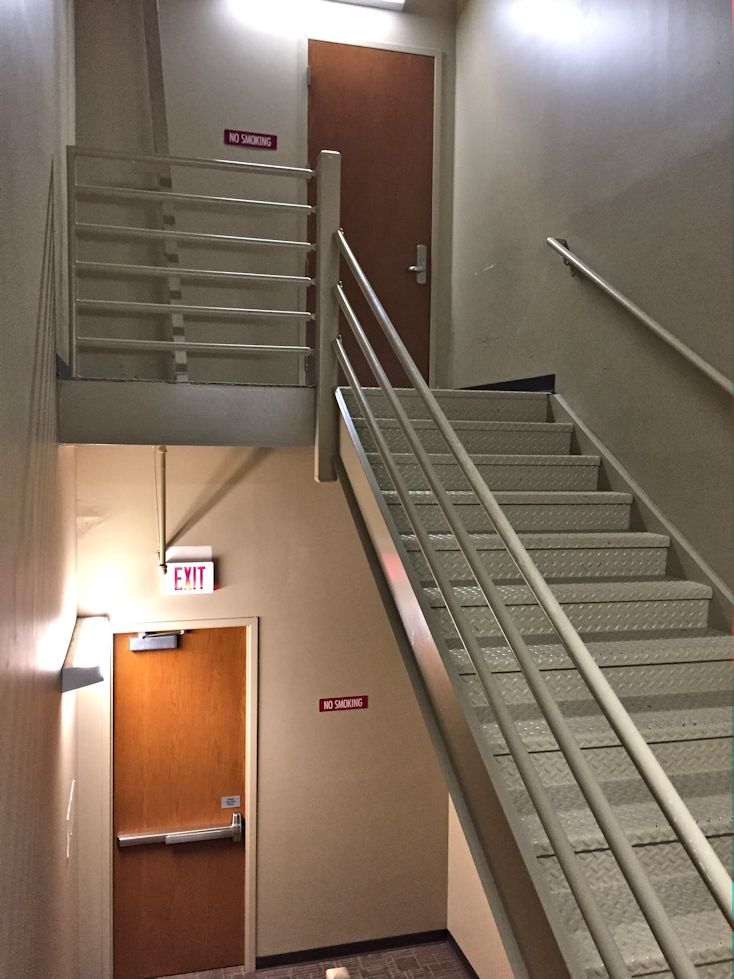
Changes to the 2024 IBC will align the code requirements with industry best practices and will add a requirement for stairwell doors to unlock upon fire alarm activation to allow reentry.
Emergency Release Methods for Stairwell Reentry
ICC Proposals E47-21 and G61-21 – Approved as Modified by Floor Modifications
The IBC currently requires all doors leading to a stairwell to allow building occupants to leave the stairwell if it should become compromised during a fire by smoke and flames or by firefighters and equipment. To facilitate stairwell reentry, doors may have passage sets or fire exit hardware with non-locking lever trim (no lock on either side of the door), or doors may have electrified locks or electrified lever trim for fire exit hardware. During a fire, the electrified lever on the stair side is intended to be unlocked remotely without unlatching, allowing building occupants to open the door from within the stairwell to find another exit or wait for assistance.
In past editions of the IBC, the doors were required to be unlocked by a switch located at the fire command center or inside the main entrance of the building. But what if the fire department has not yet arrived to activate the switch? And what happens to the locks if there is a loss of power? For this application, the hardware industry typically uses fail safe locks which release upon loss of power, but this was not specifically mandated by past editions of the code.
This will be resolved in the 2024 IBC, where locks on the stair side of stairwell doors must be capable of being unlocked simultaneously without unlatching, when any of the following conditions occur:
- A signal from the fire command center, if present, or a signal by emergency personnel from a single location inside the building’s main entrance
- Activation of a fire alarm signal (where present) in an area served by the stairwell
- Power failure to the electric lock or locking system
This change will ensure the highest level of safety with regard to stairwell reentry and will align with what has already been an industry best practice.
~~~

Previous editions of the IBC have not included a way to lock elevator lobby doors, preventing access to tenant space. The 2024 edition will include a new section addressing these doors.
Elevator Lobby Exit Access Doors
ICC Proposal E56-21 – Approved as Modified by Floor Modification
There is a new section of the 2024 IBC, which will not technically apply until this edition of the code has been adopted in a project’s jurisdiction. Until then, an AHJ could grant a code modification based on the requirements of the 2024 edition.
The change is related to elevator lobby doors and the need to secure the doors between elevator lobbies and tenant spaces. Although NFPA 101 – Life Safety Code includes a section allowing doors between elevator lobbies and tenant spaces to be locked, the IBC did not contain a similar section. Several cities and states have modified the IBC to add requirements similar to those of NFPA 101, but the requirements were not consistent from one state/local code to the next.
The 2024 IBC will include a new section allowing doors leading from an elevator lobby to a tenant space to be locked, preventing access from the elevator lobby to the tenant space, if certain criteria are met:
- For all building occupants, the path of travel to at least two exits must not be required to pass through the elevator lobby.
- The building must be equipped throughout with an automatic sprinkler system and a fire alarm system. The elevator lobby must be provided with an automatic smoke detection system.
- Activation of the fire alarm system must automatically unlock the lock to allow egress from the elevator lobby, and the lock must remain unlocked until the fire alarm system is reset. Activation of the fire alarm system by the use of a manual fire alarm box is not required to unlock the doors.
- The electric locks must unlock upon loss of power, and via a switch located at the fire command center, security station, or other approved location.
- A two-way communication system must be installed in the elevator lobby, adjacent to the door with the electrified hardware. The communication system must be connected to an approved constantly attended station that has the capability of unlocking the door.
- Emergency lighting must be provided on both sides of the electrically locked door.
- The door locking system units must be listed to UL 294 (Note: The approved change may encourage the ICC code correlating committee to modify this text to allow this hardware to be listed to UL 1034 as an alternative to UL 294).
A future Decoded article will address some of the 2024 code changes related to mechanical hardware. Remember, changes that are clarifications to the code may be used immediately to help with a better understanding and more consistent interpretations. Approved proposals that are actual changes to the requirements will not technically apply until the new code has been adopted in a project’s jurisdiction. In the meantime, the new code language could be used when requesting a code modification from the AHJ. Keep in mind that state or local codes may vary from the model codes.
You need to login or register to bookmark/favorite this content.

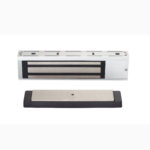
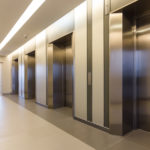
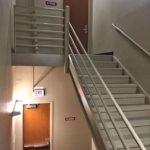
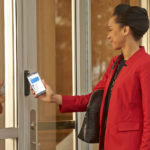




Let me also point out that Section 1010.2.1 requires that “the unlatching of any door or leaf for egress shall require not more than one motion in a single linear or rotational direction to release all latching and all locking devices”
Suppose we have a maglock with a sensor release and a PUSH TO EXIT button. Suppose that door with a maglock also has a lockset with a lever handle or a panic device. Suppose there is a problem with the sensor and you have to hit the PUSH TO EXIT button (that’s one motion) and then turn the lever or push the panic bar, then that’s two motions required for egress and that’s not allowed. Whereas, if we had a maglock used with a lockset or panic bar that had an RX switch, and turning the lever or pushing the panic bar were to also release the maglock, thus releasing both the latch and the maglock with the same motion, then that’s the way to go in my opinion.
Regarding ” “Push to Exit” and unlocks the door for 30 seconds, independent of the access control system electronics”:
This seems to confuse the heck out of a lot of people I’ve asked . If the “Push to Exit” button assembly includes its own timer board for the 30 second delay and that timer has a relay independent of the button switch to break the power to the maglock, is that “independent of the access control system electronics?” Some people say NO and that you need a pneumatic timer in the button. An electronic timer board in the button is part of the access control system electronics, since it controls access and is electronic. For example, the Camden CM-30EE with electric timer vs the Alarm Controls TS-14 with pneumatic timer. When exactly do you need to use the pneumatic? Thanks!
Hi Max –
This is not specifically addressed in the model codes, but here’s a post on that topic: https://idighardware.com/2018/09/wwyd-push-to-exit-switch/.
– Lori